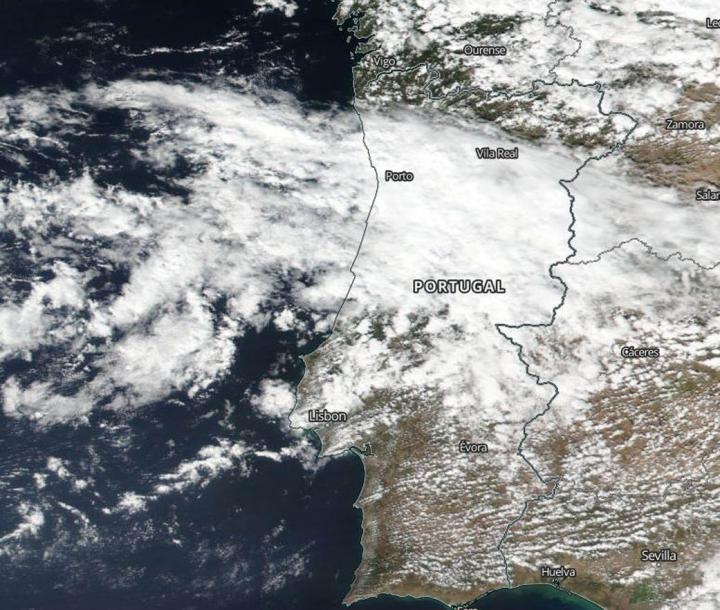
Credit: Credit: NASA Worldview, Earth Observing System Data and Information System (EOSDIS)
Former Subtropical Storm Alpha was a short-lived storm that formed and fizzled within 24 hours. NASA-NOAA’s Suomi NPP satellite found the remnants of former Subtropical storm Alpha spreading over Portugal and northwestern Spain.
Alpha formed off the coast of Portugal by 12:30 p.m. EDT (1630 UTC) on Friday, Sept. 18. Alpha made landfall in Portugal later that day around 5 p.m. EDT (2100 UTC) about 120 miles (195 km) north-northeast of Lisbon, Portugal.
On Friday, Sept. 18 at 11 p.m. EDT (0300 UTC on Sept. 19), the National Hurricane Center noted that the storm had become a post-tropical cyclone. Post-tropical is a generic term describes a cyclone that no longer possesses sufficient tropical characteristics to be considered a tropical cyclone. Post-tropical cyclones can continue carrying heavy rains and high winds. Former tropical cyclones that have become fully extratropical and remnant lows are two classes of post-tropical cyclones.
On Sept. 18 at 11 p.m. EDT (0300 UTC on Sept. 19) METEOSAT satellite imagery, radar data, and surface observations indicated that Alpha had degenerated to a post-tropical remnant low just a few miles to the southeast of Viseu, Portugal.
Less than 12 hours later on Sept. 19 at 9:35 a.m. EDT (1335 UTC), the Visible Infrared Imaging Radiometer Suite (VIIRS) instrument aboard NASA-NOAA’s Suomi NPP satellite found the remnants of former Subtropical storm Alpha spread over Portugal and into northwestern Spain.
The National Hurricane Center forecast called for the remnants to move into north central Spain later on Saturday, Sept. 19 and dissipated by Sept. 20 at 0000 UTC (Sept. 19 at 8 p.m. EDT).
Additional information on this system can be found in products from the Portuguese Institute for Sea and Atmosphere at http://www.
NASA Researches Tropical Cyclones
Hurricanes/tropical cyclones are the most powerful weather events on Earth. NASA’s expertise in space and scientific exploration contributes to essential services provided to the American people by other federal agencies, such as hurricane weather forecasting.
For more than five decades, NASA has used the vantage point of space to understand and explore our home planet, improve lives and safeguard our future. NASA brings together technology, science, and unique global Earth observations to provide societal benefits and strengthen our nation. Advancing knowledge of our home planet contributes directly to America’s leadership in space and scientific exploration.
###
Media Contact
Rob Gutro
[email protected]
Original Source
https:/




